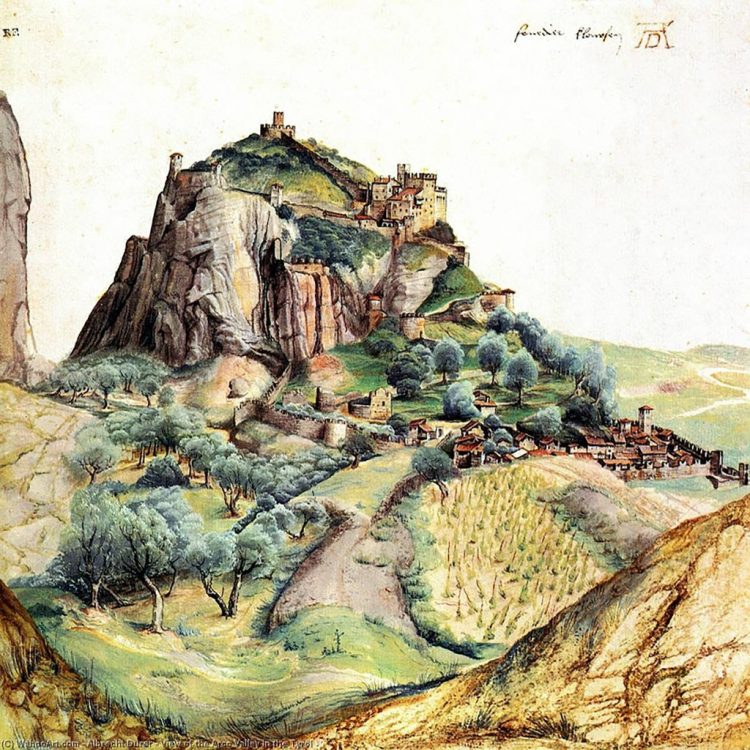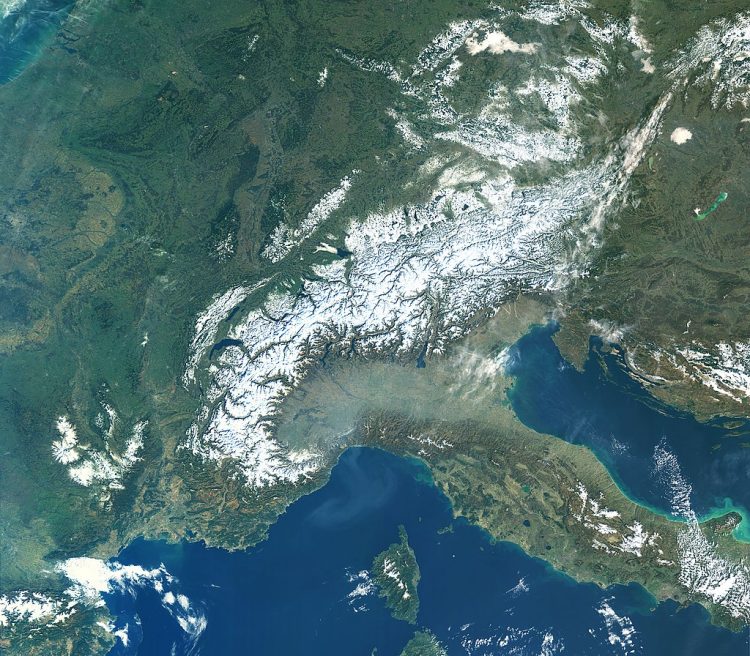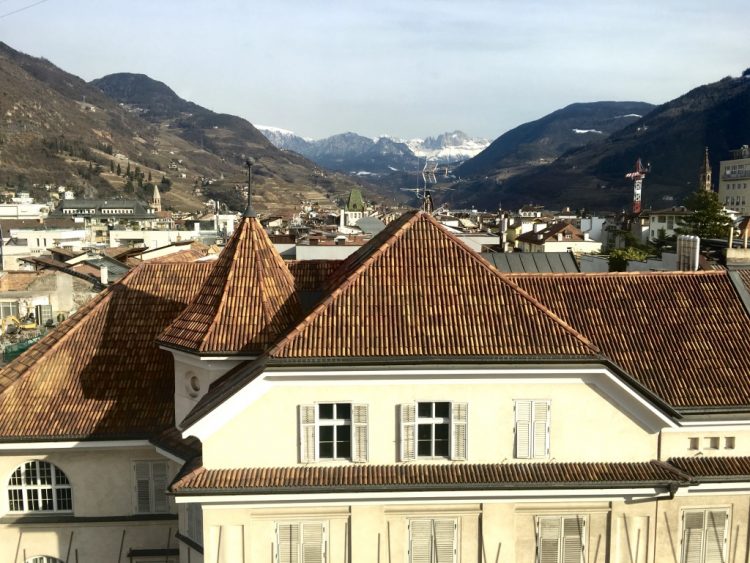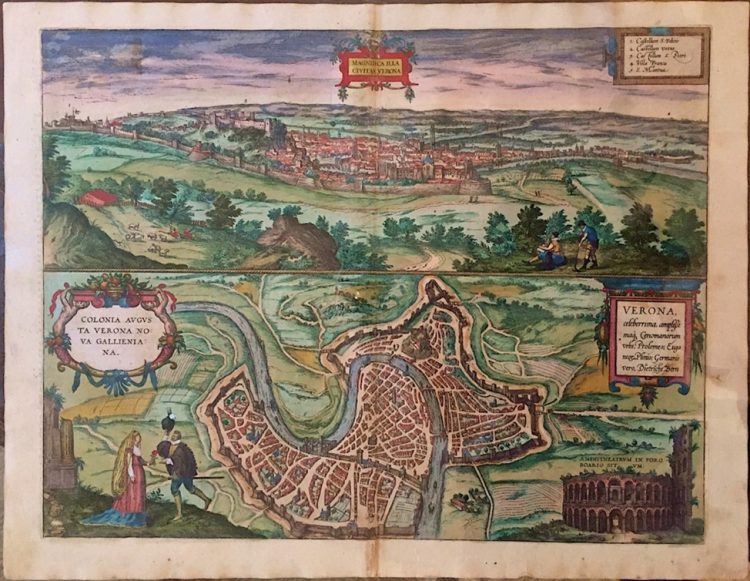Crossing the Alps in the Renaissance: German immigrants in northern Italy
21 Feb 2023|Zoe Farrell
- Research

When studying European migration in the early modern period, it is easy to draw parallels with modern rhetoric. Whilst immigrants were required for their skill and labour in developing economies, they were also feared, not only for the potentially dangerous diseases and ideas they could spread, but also for taking the local population’s employment opportunities, or, worse, seeking charity. Such fears not only applied to long-distance migrants, but also those from neighbouring regions or states. In early modern Italy, those from outside the immediate city or area could be labelled ‘forestieri’, meaning foreigner. Nonetheless, the early modern period was one of intense movement of individuals, often from villages and towns to larger cities, and neither natural impediment nor an apprehensive local population deterred such movement.
One of the greatest natural barriers to the movement of people in early modern Europe was the Alps. Yet, through a series of protected routes, both people and goods were able to make their way in large numbers across valleys and rivers, creating transalpine connections which flourished even during times of upheaval.

Just how connected were German lands in the Holy Roman Empire and Italian lands during the sixteenth century – a time of the Renaissance, Protestant Reformation, and Catholic Reformation? To answer these questions, it is important to look not only at famous travellers, like the artist Albrecht Dürer, and movement to metropolitan centres like Venice, but also at the everyday movement of people across the Alps into cities of northern Italy.
If you were to cross the Alps today without the help of a plane, you would be faced with only a few direct routes, which cross valleys and mountainsides. Still one of the most important of these routes, the Brenner Pass was in the sixteenth century one of the main thoroughfares for people and merchandise crossing between Italy into northern Europe. Highly coveted and fought over, in the sixteenth century, the southern entrance to the Brenner Pass was part of the Venetian mainland territory and controlled by Venice’s satellite city, Verona. The Brenner Pass connected cities like Venice and Milan to important centres in the Holy Roman Empire, such as Nuremberg and Augsburg. In between these major centres, a series of connected towns and cities facilitated exchange in this key period of cultural development. Cities like Trento, Bolzano, and Innsbruck were important stations for merchants conducting trade between Italy and northern Europe. Bolzano, for example, had four fairs every year at which Germans and Italians came together to exchange merchandise. Both German and Italian cultural influences remain evident in Bolzano today, in the architecture, food, and language of the people.

Travelling south into Italian territories, visitors and immigrants would have a choice of several large, developing cities in the Venetian mainland empire. In particular, Verona acted as a significant point for travellers from the north, some of whom were passing through, others who settled. For merchants, Verona was particularly appealing for its supply of wool and raw and semi-finished silk. Verona was also a notable site for the production of woollen berets. So special was the relationship between German lands and Verona that a unique element of Veronese schooling in the fifteenth and sixteenth centuries was the teaching of the German language.
So why would people leave German lands to settle in the Venetian mainland empire? The desire to find work was one of the key drivers of immigration in the early modern period. It was not uncommon for people to move frequently to find work opportunities, leading to a sharp rise in urbanisation. However, the sixteenth century was also a time of great confessional upheaval and as a result, people often moved for religiously motivated reasons. With the advent of Protestantism in southern Germany, some moved to places like Verona because of their adherence to Catholicism. Still, others who moved to northern Italy for work opportunities brought with them new Protestant ideas. Already by September 1520, a German monk reported that he had taken some of Luther’s work to Venice to sell and found a captive audience. In early 1524, Clement VII cautioned that Lutheran books were being circulated and purchased in Brescia and Verona, and Vicenza was seen as a ‘hotbed’ of Lutheran activity. Despite this religious turmoil, trade between German lands and northern Italian cities continued. As Demo has argued, ‘no impediment of a spiritual nature’ could stop Italian merchants in the expansion of their businesses. Yet, Italians who repeatedly traded with German merchants were seen as potentially dangerous, and those who were accused of non-Catholic beliefs were seen as ‘infected’. As a result, many merchants in cities like Vicenza were questioned by the inquisition.

Migrants were thus welcomed with trepidation. Whilst growing cities like Verona needed to attract foreigners to bring to the city new trades and skills, there was a notable concern about the dangers of outsiders, particularly those labelled as vagabonds who did not practice any trade but instead sought charity. In 1591, a city proclamation described the concern of authorities about the many foreigners coming to the city. Yet, this proclamation also included reassurance for the many ‘servants and apprentices from alien territory’ who entered frequently. Such immigration was vital for the city’s development and thus the proclamation declared that servants, apprentices, and masters had to gain a licence within three days of their entry to the city, to distinguish themselves and their productive capabilities, thus showing the value they could add to the city.
Indeed, it was not only merchants who came to Verona. Evidence from the demographic records of the city show a range of artisans in a variety of professions who originated from German territories, including fur workers, tailors, and bakers. Amelio Tagliaferri has estimated that men listed as German (‘Teutonico’ or ‘Alamanni’) constituted a significant minority of the immigrant workers listed in the demographic records of the city.
Thus, despite anxieties and fears, particularly heightened during the religious upheaval of the German Reformation, German immigrants and trade with the Holy Roman Empire remained vitally important to towns and cities in northern Italy. The large cities of the Veneto also remained appealing to German travellers and immigrants because of the job opportunities they presented. Cities and towns through the Alps and into northern Italy created a network of exchange in this key period of cultural development. As more investigations are carried out into transalpine, as well as other areas of exchange, historians have rightly begun to question just how Italian was the Italian Renaissance.
Category: Research
Author

Zoe
Farrell
Zoe is the Leverhulme Early Career Fellow and Junior Research Fellow in History.